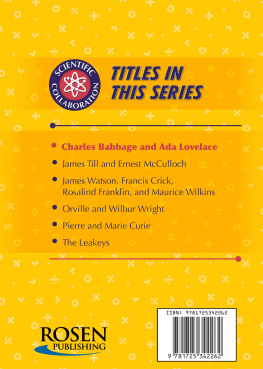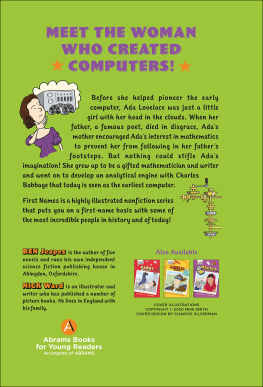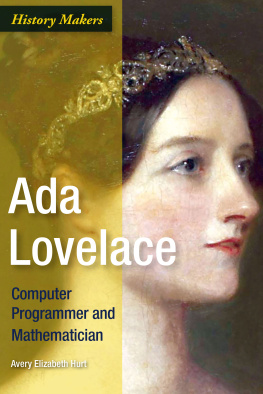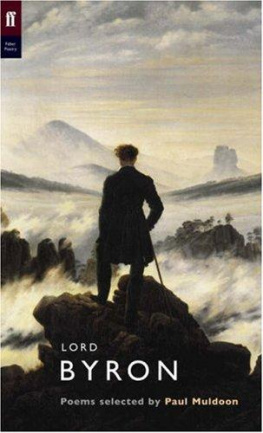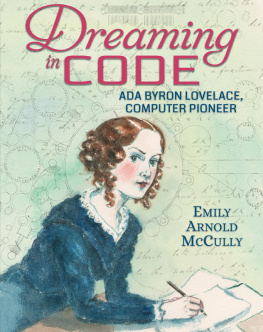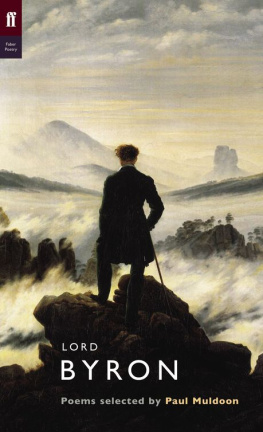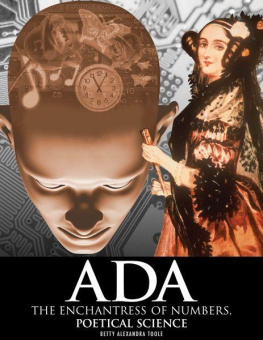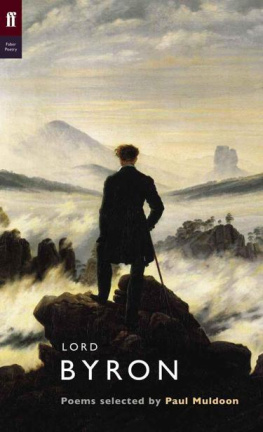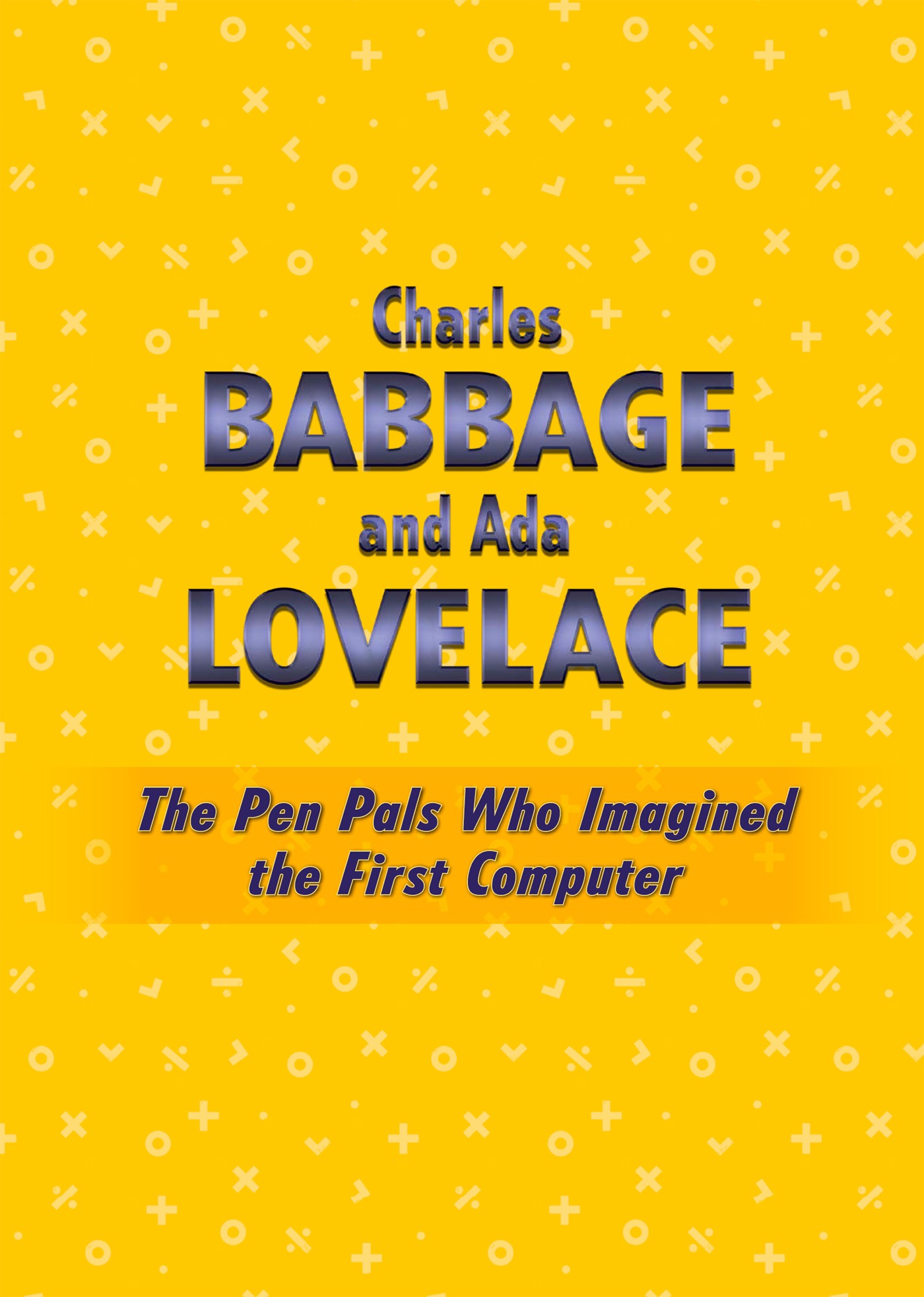Published in 2021 by The Rosen Publishing Group, Inc.
Copyright 2021 by The Rosen Publishing Group, Inc.
All rights reserved.
No part of this book may be reproduced by any means without the written permission of the publisher.
Names: Lucas, Eileen, author.
Title: Charles Babbage and Ada Lovelace: the pen pals who imagined the first computer / Eileen Lucas.
Description: New York: Rosen Publishing, 2021. | Series: Scientific collaboration | Audience: Grades 7 to 12. | Includes bibliographical references and index.
Identifiers: LCCN 2019011903 | ISBN 9781725342262 (library bound) | ISBN 9781725342255 (pbk.)
Subjects: LCSH: Babbage, Charles, 1791-1871Juvenile literature. | Lovelace, Ada King, Countess of, 1815-1852Juvenile literature. | MathematiciansGreat BritainBiographyJuvenile literature. | Women mathematiciansGreat BritainBiographyJuvenile literature. | ComputersHistory19th centuryJuvenile literature.
CPSIA Compliance Information: Batch #BSR20. For further information contact Rosen Publishing, New York, New York at 1-800-237-9932.

Introduction
C harles Babbage, widowed mathematician, scientist, and inventor, enjoyed inviting a great variety of people to his home. At various times, his soirees, or evening gatherings, included government and military leaders, scientists, and writers. One evening, the Duke of Wellington, hero of Waterloo, might well be chatting with Michael Faraday about electricity. On another, who knows what biologist Charles Darwin and author Charles Dickens might be discussing over there in the corner!
Among the guests one night in 1833 was Lady Byron, whose story of a disastrous marriage to the deceased poet Lord Byron was well known. Her daughter, Augusta Ada Byron, called Ada, was also a guest. Most likely Ada would not be discussing rhyme with poet Alfred, Lord Tennyson, for her mother guarded carefully against such nonsense.
Some of the guests would be captivated by a mechanical dancing woman, spinning on a pedestal. The Silver Lady, as Babbage referred to her, was poised with a bird on her finger. Babbage had seen the figure once as a child and then stumbled upon her again many years later. He purchased the dancer, restored her mechanisms, and now showed her off to the guests in his drawing room.

Charles Babbage, shown here in a photo that appeared in a London journal in 1871, was a British mathematician, inventor, and philosopher, credited by some as the forefather of the modern computer.
Adas attention would be given to another machine. It was the partially assembled Difference Engine No. 1 that Babbage had spent years and a great deal of money, both his own and the governments, trying to build.
Babbage first constructed a small model of a calculating machine in 1822. He and a college friend, John Herschel (17921871), had been hired to find and correct errors in tables used to navigate the oceans. These tables were gathered in what was called the Nautical Almanac. They were made up of rows upon rows of numerical calculations based on powers of 10, called logarithms. The tables had been produced by human calculators, people hired to perform mathematical computations with paper and pencil. They were full of errors, which irritated Babbage, and posed danger to ships at sea.
Babbage dreamed of a process that would eliminate or greatly reduce such errors. This was why he spent years designing Difference Engine No. 1. It was made up of a long line of gears, which turned as they accurately added and subtracted numbers on down the line. When young Babbage had first reported on his machine to the Royal Astronomical Society in London, he boasted that, There shall not exist the possibility of error in any printed copy of tables computed by this engine.
Now, a little more than a decade later, the portion of Difference Engine No. 1 in Babbages home captured Adas attention. She seemed to instinctively understand its potential. Sophia De Morgan, wife of a well-known mathematician, would recall, Miss Byron, young as she was, understood its working, and saw the great beauty of the invention.
Though Miss Byrons great passion was for math, it certainly seemed influenced by her fathers sense of poetry. While Babbage worked out the mechanics of his inventions, she is remembered for her almost poetic explanation of what one in particular could do. More than a century before what people recognize today as a computer, Charles Babbage was, as he designed his Analytical Engine, developing basic computer hardware. With her instructions as to how that machine might work, Ada Byron, soon to become known through marriage as Ada Lovelace, would one day be referred to as the worlds first computer programmer.

By the time this portrait was painted, Augusta Ada Byron had married William King and become known as the Countess of Lovelace. Adas interest in science and mathematics would lead her to write extensive notes about the potential of Charles Babbages automated calculating machines.
When they met in 1833, Charles Babbage was forty-two years old. Ada Byron was eighteen. Though years apart in age and very different in many ways, Ada and Babbage were both passionate about numbers. The great scientific collaboration that unfolded between them would contain the seeds of the computer technology of the twentieth and twenty-first centuries.

Logarithms and the Limitations of Human Calculators
C harles Babbage was born on December 26, 1791, in London, England. This was near the end of the Georgian period of English history, which would be followed by the Victorian era. The time known as the Industrial Revolution would include them both. It was a time of exciting developments across a wide range of industries in Britain and around the world.
Charles grew up under comfortable conditions. His father, Benjamin, was successful in the banking business. But Charless relationship with his father was difficult. Charles claimed that his father had a horrible temper. He later told a friend that Benjamin Babbage was a tyrant, [and] his presence [brought] silence and gloom. Charless mother, named Elizabeth but called Betty, was much easier for the son to get along with.
Hungry for Knowledge
Charles was always curious about how things worked. His interest in studying math and science grew while he attended boarding school as a boy. He became especially fond of algebra. For a period of time, he and another boy woke at three oclock each morning to study this form of mathematics on their own! For the sake of their health, a teacher soon put a stop to that.

